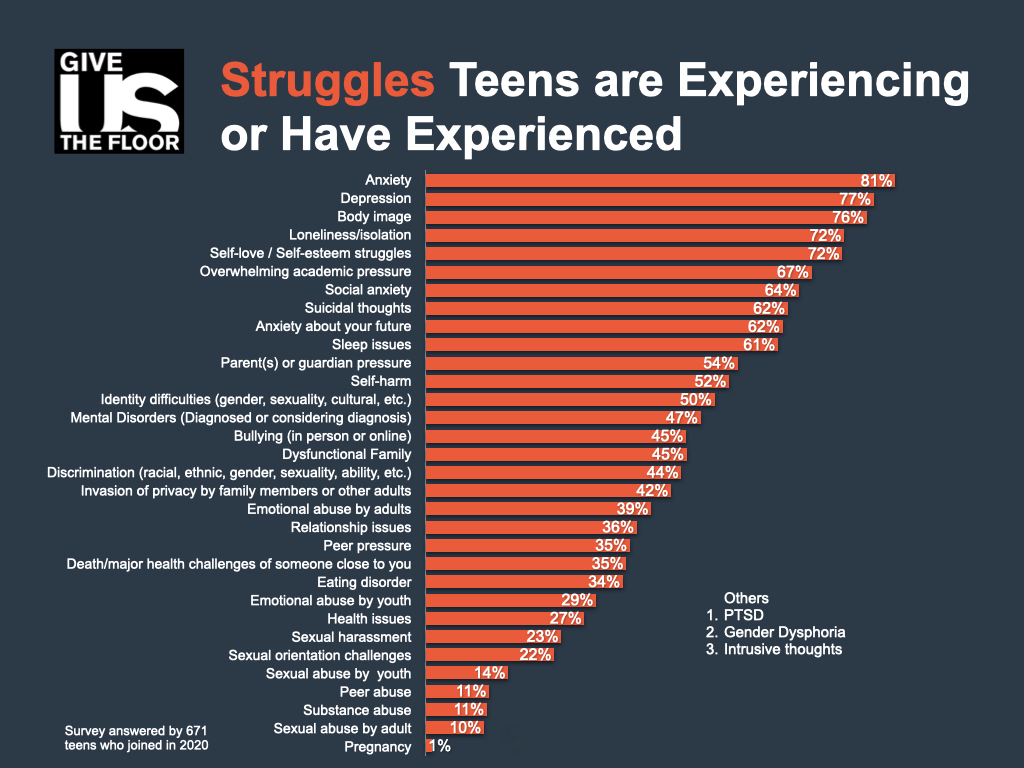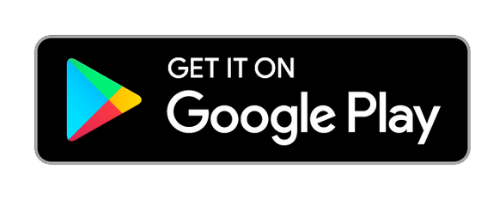
2020 IMPACT REPORT

Data collected from anonymous surveys sent to teen participants during 2020
Social isolation and loneliness increase the risk of depression up to 9 years later
Our youth are living through unprecedented and turbulent times.
As a result of the ongoing pandemic, research is now revealing that their increased isolation is contributing to the rapid deterioration of their mental health and wellbeing.
In a survey conducted by Harris for the National 4-H Council in May 2020, 61% of teens reported that the COVID-19 pandemic has increased their feelings of loneliness.
In a systematic review, Loades and colleagues examined the impact of social isolation and loneliness on mental health in children and adolescents. The relationship between loneliness and mental health problems in healthy children and adolescents was assessed to determine if quarantine and social isolation are predictive of future mental health problems. The review included 63 studies with a total of 51,576 participants. Social isolation and loneliness increased the risk of depression up to 9 years later.
In our program, we have observed an alarming increase of teen participants struggling with crises such as suicidal ideations, self-harm, substance abuse, and even overdoses.

2020
Despite a year of terrible hardships on a global scale, Give Us The Floor is thrilled to report our silver lining:
Give Us The Floor supported 50.4% more teens in 2020, compared to 2019. Our supportive group chat program helped teens in distress connect with peers, easing their feelings of isolation and providing support with their struggles. Our team is extremely proud of this accomplishment!
That impact would not have been felt without the continued generosity of our supporters. It is because of their unwavering support that we are able to positively impact the lives of the thousands of teens that we serve. But there is so much more we can do. In order to tackle the increased risks, we have set a goal to double the number of teens we support in 2021.
Watch this video where participants explain how Give Us The Floor has positively impacted their lives.
High Need
Between April 2018 (launch of the Supportive Group Chats) and December 2020
- TEENS SERVED: 3,127
- DOSAGE: 740,549 days
- CONNECTION: 650,000 messages exchanged
- FREQUENCY OF CONNECTION: An average of 50 messages per month per active member
- LIFETIME: Participants have been active on average 324 days, over 10 months!
In 2020
- TEENS SERVED: 2,284
- 185 teens on waiting list at the end of the year
50.4% growth compared to 2019
Struggles Teens Participating in the Program are Experiencing or Have Experienced

A Disturbing Increase of Struggles Experienced by GUTF participants in 2020 Compared to 2019
- Sexual abuse +41%
- Suicidal thoughts +24%
- Identity difficulties +32%
- Parents or guardian pressure +26%
- Invasion of privacy by adults +24%
- Discrimination +19%
- Overwhelming academic pressure +14%
- Depression +12%
- Mental disorders (diagnosed) +12%
The Supportive Group chats are helping participants with their struggles
85% reported that the group chat had helped with their struggles after just one month. That number shot up to 88% after three months of engagement in the program.

73% reported that they are not sure or sure they couldn’t have gotten the help from somewhere else
Participants feel less lonely thanks to their Supportive Group Chat
79% reported that the group chat had helped them feel less lonely after just one month.
A safe place
After just one month,
98% of the participants reported that they feel safe sharing their personal challenges in their group chat
91% reported that they feel comfortable sharing their personal challenges
Belonging to a group improves the way participants feel about themselves
73% reported that the group chat had improved the way they feel about themselves after just one month. That number shot up to 81% after three months of engagement in the program.

Demographics
72% of the participants identify as members of the LGBTQIA+ community, additionally 10% are questioning.


Participants reside in all 50 US states and in the District of Columbia with the highest membership in California, Texas, Florida, and New York.
How does it feel to belong to a Supportive Group Chat?
“It's kinda like having a net there when you fall or are falling to stop the fall or at least slow it down.”
“It feels like having life support, cause without it I'm gone.”
“it’s like if the weight of the world has been lifted off of your shoulders because you have people to share the burden with you now.”
“It feels like you have a place where people will understand you and not judge you for being yourself.”
“It feels comfortable to talk about your problems knowing no one will tell anyone else.”
“I know I'm not alone.”
A few testimonials among thousands that demonstrate how participants are being helped
“I finally ate today thanks to my group.”
“I didn't feel a purpose to live but they helped me understand I had much to live for.”
“They are a constant reminder that I’m not alone in my depression journey.”
“They helped me through the transition of getting out of an abusive home.”
“They helped me going through my sexual assault.”
“When I talked about questioning my sexuality and gender identity. They were supportive and helped me organize my thoughts and what felt right. They validated me and my feelings.”
“I was having a really bad anxiety attack and they all talked to me until I calmed down enough to function again.”
“The diversity of the individual people and their issues brings light that I am not alone in this struggle. We are all so different yet the same. “
What Are They Talking About?

Methodology
Data provided in this report was collected through a series of anonymous surveys that were sent to the teen users in the Support Group Chats program in 2020. Three samples are taken at different intervals of the program:
- Baseline survey upon joining the program sent to 1244 participants with a 54% response rate
- 1 month after joining the program survey sent to 1069 participants with a 28% response rate
- 3 months after joining the program survey sent to 678 participants with a 12% response rate
- Participants are surveyed after 1 year in the program. However, due to low response rates, data is inconclusive. That said, 1-year survey results did show that 95% reported having been helped
- Comparison data from 2019, as shown on slide 4 was collected through the same process.
Quotes from teens in the program were provided anonymously.


